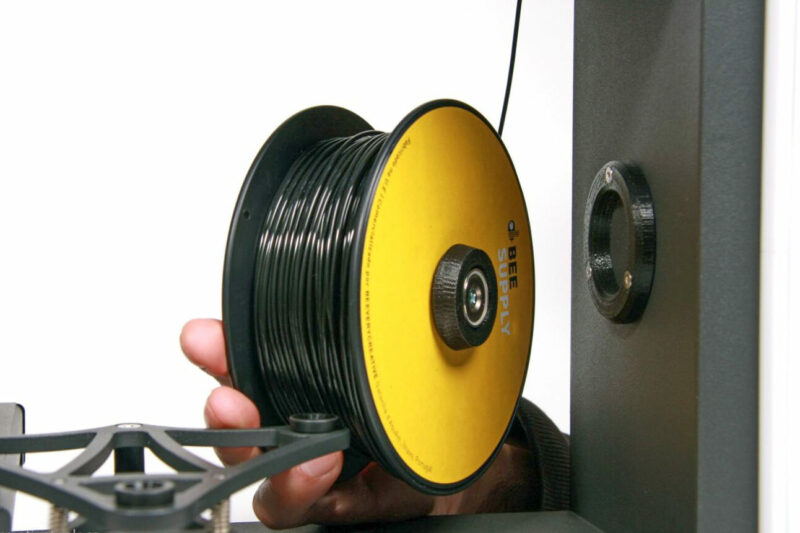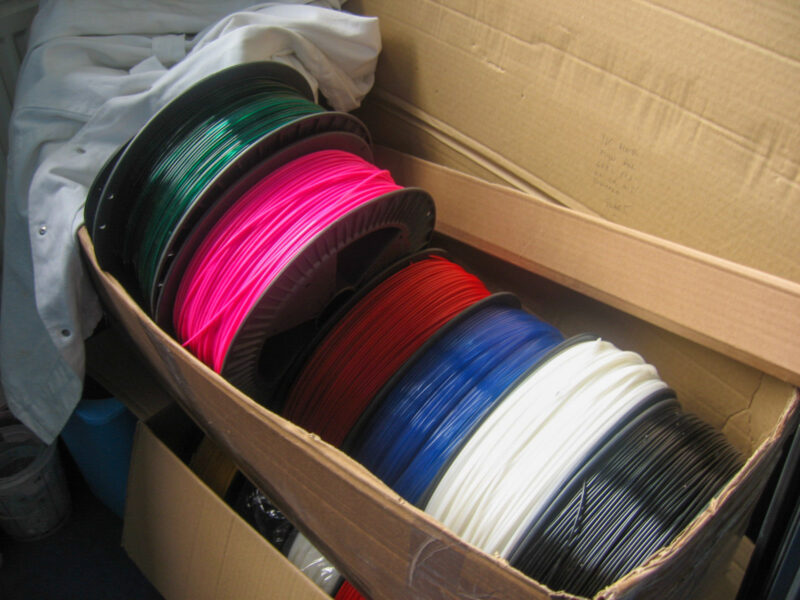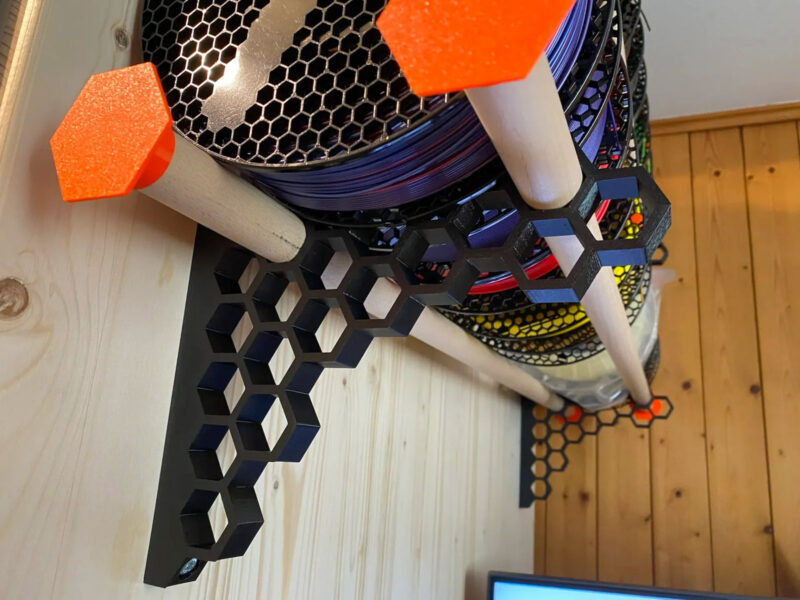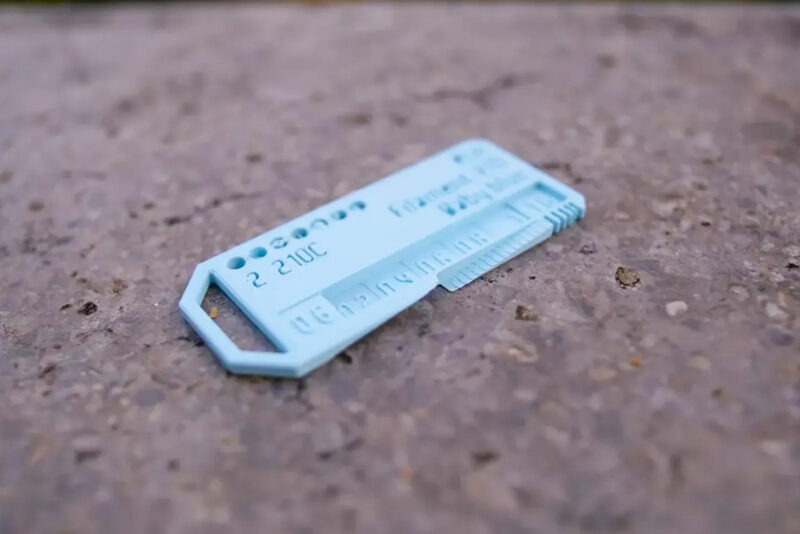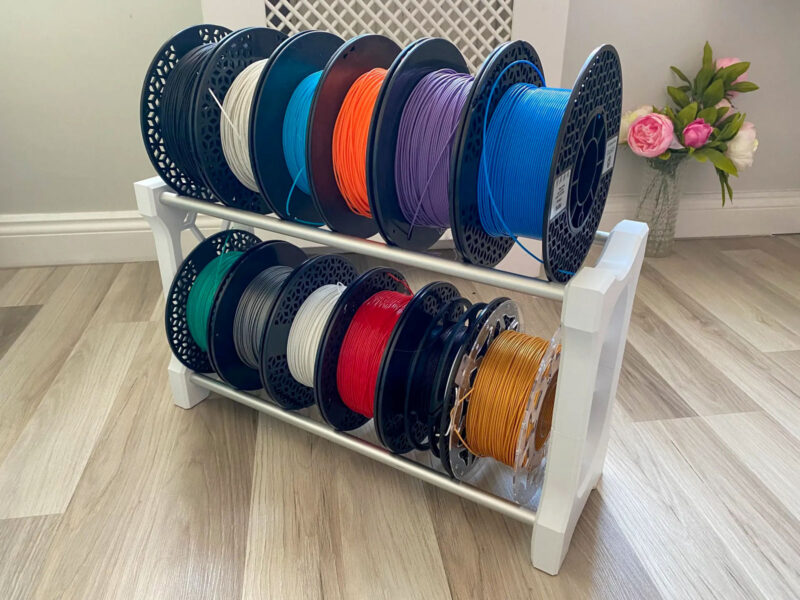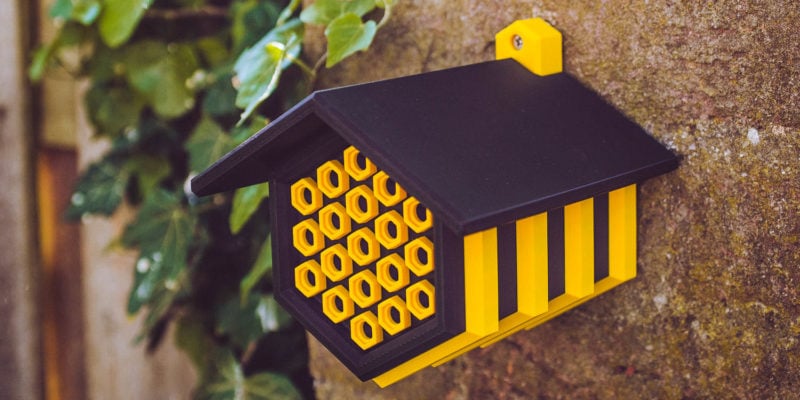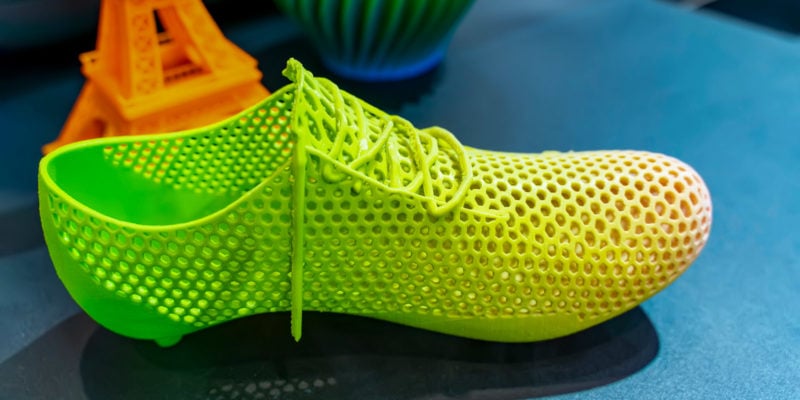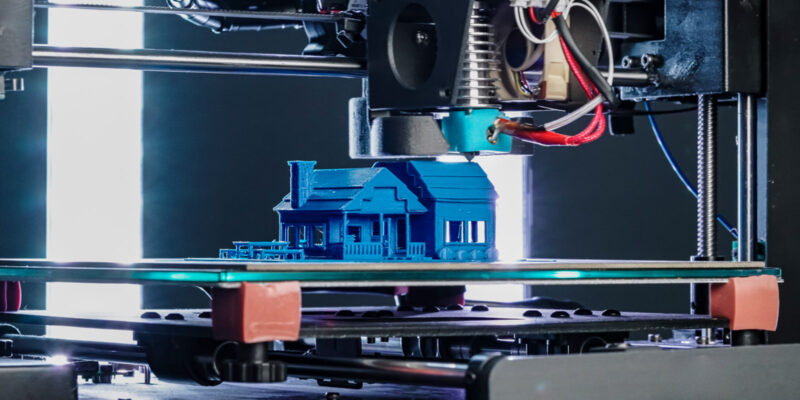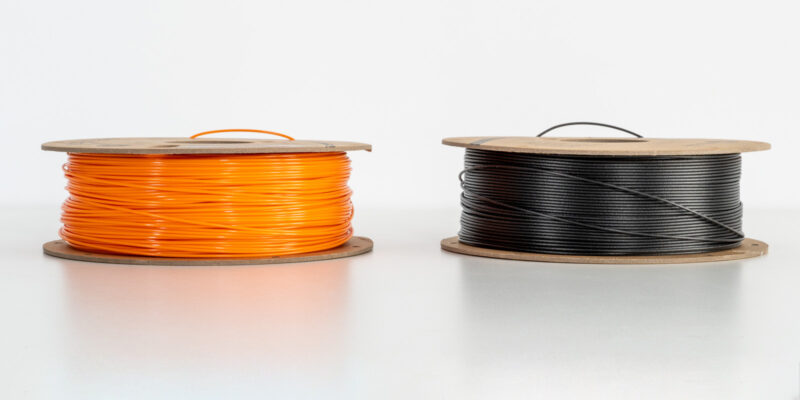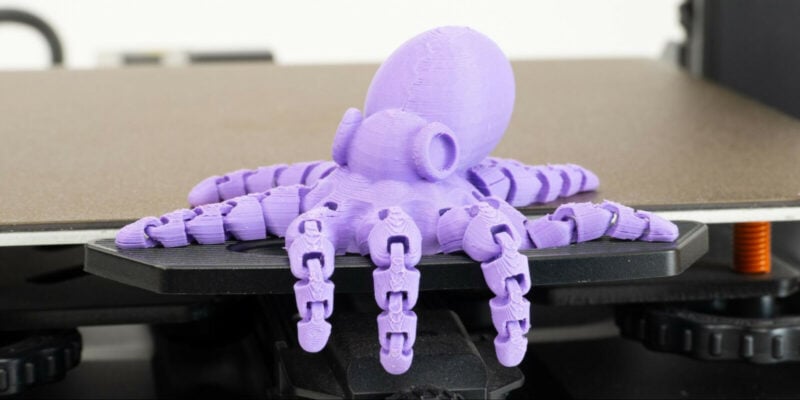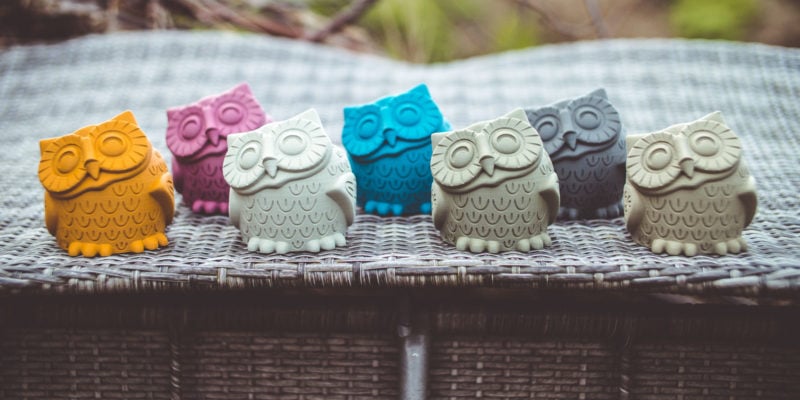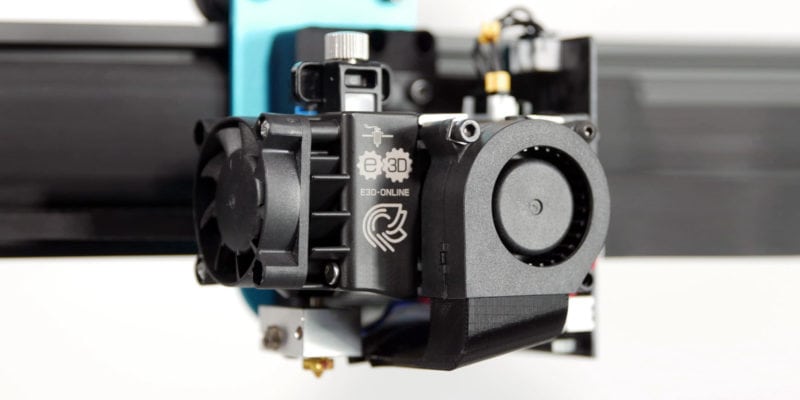Despite its popularity, 3D printing ABS is usually a headache and a half (quite literally, if you aren’t careful with the fumes). Its high printing temperature and shrinkage rate make it especially prone to issues with warping, layer adhesion, and dimensional accuracy.
While it’s easy to smooth away visible print layers from ABS, you may ask yourself if it’s even worth all the hassles and failed prints along the way. Surely, there must be a better option by now, right?
The good news is: yes! There are multiple alternatives to ABS filament, and many of them don’t share ABS’s fickle temperament or toxic emissions.
If you’re ready to move beyond basic ABS but aren’t sure where to start, keep reading. We’ve compiled a list of our favorite ABS alternatives for you below. We’ll teach you which materials work best for which projects, how they compare to ABS, and how to use them for the best possible results.
What to Look for in an ABS Filament Alternative
Though several other 3D printing filaments can be used in place of ABS, it’s important to choose the right one depending on the intended functions of your final prints. Ideally, you should pick a material that has the same advantages as ABS, but without the disadvantages.
Some of the most notable disadvantages are ABS not sticking to the bed and trouble with ABS bridging. Another common challenge is 3D printing ABS without enclosure. These are all things you could be looking to improve upon.
In terms of material properties, these can be important factors for your ABS alternative:
Temperature Resistance
ABS has excellent temperature resistance. With a glass transition temperature of 105°C, ABS can withstand high-heat environments with little to no thermal deformation. If your prints will be exposed to high temps, you should look for an ABS alternative with a high melting temperature, like PC or ASA material.
However, if thermal resistance isn’t an important factor for your finished prints, you will have an easier time using a low-temp filament like PLA or PETG. ABS’s higher temperature requirements make it difficult to print with, since it needs a heated bed, all-metal hotend, and ideally an enclosure to contain the necessary heat.
Strength and Durability
While ABS has decent overall durability, it certainly isn’t the strongest filament option available. Its impact resistance, tensile strength, and abrasion resistance are good enough for basic prototyping and industrial parts, but it could be better. In fact, most alternative materials perform better than ABS in high-load and impact environments.
Chemical Resistance
ABS is best known for its solubility in ketones like acetone. It melts and dissolves when it comes in contact with acetone and can be easily smoothed to a glossy finish. This makes it a popular choice for users who want to skip long and laborious post-processing methods like sanding.
It’s also preferred for projects that need to be printed in multiple parts. Acetone or ABS slurry are powerful glues for ABS parts and melt them together better and cheaper than normal plastic cement and epoxies.
ABS isn’t the only material that can be smoothed in acetone, so if easy post-processing is a concern, look for other ketone-soluble materials.
However, if your finished prints will be used in an environment where they may come into contact with chemicals, oils, etc., it is a good idea to use a filament with good chemical resistance, like PETG, as an ABS alternative.
Shrinkage
One of the reasons ABS is so hard to print with is that it shrinks while it cools. This can cause warping and layer adhesion issues if you don’t keep your 3D printer at a consistent temperature during the printing process. This makes failed parts unfortunately common with ABS.
Its shrinkage can also cause delamination and cracking in finished prints, which reduces the durability and strength of the ABS part significantly.
When looking for an ABS alternative, choose one with a low shrinkage rate. This will make it easier to print with and result in more consistent print quality.
Alternatives to ABS Filament
There are plenty of materials that you can use as an alternative to ABS in your 3D printer. Not only do they have similar or better advantages, but they also lack some, if not most of the shortcomings. Here are our favorites:
ABS+
If you want a material that acts like ABS but has slightly better printability, ABS+ is a good first choice. It is a special type of ABS that has been formulated to reduce the impact of ABS’s less desirable qualities, so you get all the perks of ABS without as much of the hassle.
One of the biggest issues ABS+ blends look to address is the amount of shrinkage and warping that ABS undergoes during the 3D printing process. This means ABS+ prints are less likely to fail and that they will have better dimensional accuracy when finished.
ASA
As a material that is structurally similar to ABS, ASA filament (Acrylonitrile styrene acrylate) is one of the most popular alternative materials. ABS and ASA filament are both high-temperature materials that have very similar tensile strength and impact resistance properties.
Though it is resistant to a broader range of chemicals, ASA filament is still acetone soluble, so you can chemically smooth it just as easily as ABS. This makes it an excellent option when you still want to avoid sanding and other manual post-processing methods. In addition, it gives you an easier printing experience with less warping and fewer harmful emissions.
Finally, ASA’s biggest advantage over ABS is its superior UV and weather resistance. While ABS struggles in outdoor environments, ASA stays relatively stable while exposed to the elements.
PLA+/Tough PLA
While PLA+ can’t compete with ABS’s temperature resistance, it often outperforms ABS in toughness. Like ABS+, tough PLA is chemically or structurally altered to improve some of the undesirable qualities of the base PLA material.
Regular PLA is rigid and prone to brittleness, which results in low flexibility and impact resistance. Many PLA+ brands are designed for better elasticity, which improves their impact resistance considerably.
Since PLA tends to have a higher tensile strength than ABS to begin with, tough PLA performs just as well as (if not better than) ABS in high-stress applications.
PLA+ is a much easier and more forgiving material to print with. Because it does not print at such high temperatures and doesn’t shrink as much, layer adhesion and warping are less common. It’s also considered safer since it produces significantly fewer fumes, VOCs, and other toxic emissions during the 3D printing process.
PETG
Like PLA and PLA+, PETG is a low-temperature filament that doesn’t perform as well as ABS in higher temperatures. However, PETG is a preferred alternative for outdoor use, since it is more UV resistant than ABS.
PETG has fewer issues with warping and delamination than ABS, which makes it much easier to use in your 3D printer. It also performs slightly better in terms of tensile strength and impact resistance, making it a decent alternative to ABS for high-stress uses like industrial parts.
In addition, PETG has excellent chemical resistance. This extends to ketones, so it can’t be acetone smoothed like ABS. This is ideal if your parts need to withstand exposure to chemicals, but it does make post-processing PETG more difficult.
Polycarbonate
Polycarbonate (PC) filaments are tough materials that exhibit exceptional tensile strength and impact resistance. Its durable mechanical properties make it a more suitable choice than ABS for industrial parts and other high-stress or load-bearing applications.
At about 250-285°C, PC filaments print hotter than ABS. As a result, they have a better overall temperature resistance. But you’ll also need a more powerful 3D printer to successfully make printed parts with.
While the two filaments both have issues with UV wear, PC is more prone to moisture absorption and hydrolysis damage. Neither is ideal for prolonged outdoor use.
Polycarbonate and ABS are both difficult materials to 3D print with and are prone to issues like warping, cracking, and delamination. They both also emit noticeable odors while printing and can release VOCs and harmful fumes into your surroundings if you do not use a closed printer with proper venting.
There are several varieties of PC filaments, such as PC+, PC-ABS, PolyMax, and more. They each behave a bit differently and have their own unique mechanical properties depending on the blend of materials used in them.
Most Polycarbonate blends focus on improved printing performance through better flow rates, less shrinkage, and more thermal stability, though these properties vary from one brand or blend to another.
What Is the Best Alternative to ABS Filament?
There is no overall best alternative to ABS. Each material has its positives and negatives, so it depends on your intended use for the finished prints.
For example, Tough PLA is best when printability is a concern, but it is a poor substitute for ABS in high-temp conditions. Polycarbonate is best when strength or temperature resistance is needed, while PETG is better for outdoor use.
Think about what kind of conditions your finished print will be exposed to and use that to help you decide which material has the best mechanical properties for those conditions.
Final Thoughts
ABS is a popular 3D printing filament thanks to its temperature resistance and ability to be chemically smoothed. It’s a durable material that has moderate tensile strength and impact resistance, which makes it a good choice for a variety of applications.
However, printing ABS filament on FDM printers isn’t the easiest thing to do. It is prone to shrinkage and layer adhesion issues if it isn’t kept in a temperature-stable environment during printing, and it has poor UV and chemical resistance.
Thankfully, you can use plenty of alternatives to ABS filament. For example, ABS+ and ASA can both be acetone smoothed, and they have significantly less shrinkage than standard ABS.
Tough PLA and PETG can’t compete with ABS’s temperature resistance, but they have better printability and stronger mechanical properties. Polycarbonate has some of the same printing issues as ABS but with considerably stronger mechanical properties.
Do you still print with ABS? What about the other filament types we discussed here? Let us know which alternative is your favorite in the comments!



